By Lisa White, OTR
It is an honor to be asked to contribute this month as a guest blogger. In case you missed it, April was Occupational Therapy Month! For those who are unfamiliar with occupational therapy, or OT for short, I would like to help explain who we are and what we do.
Occupational Therapy is a health and wellness profession with a holistic approach. To put it simply, we ask: “What matters to you?” We are concerned with “helping people across the lifespan to participate in the things they want and need to do through the therapeutic use of everyday activities (occupations)” (AOTA.org). We work in all types of settings including hospitals, nursing facilities, outpatient rehab clinics, schools, and home health.
As an Occupational Therapist working with people of various ages from young children to older adults, I have come to appreciate and better understand how important the following four domains are in one’s development and ability to function optimally:
- Sensory processing skills
- Neuromuscular functions (e.g., muscle tone, range of motion, strength)
- Motor skills (e.g., gross motor-coordination, balance, bilateral integration and fine motor-manipulation, visual motor integration, crossing midline)
- Perceptual Skills (e.g., spatial awareness, visual perception)
Let’s focus on how sensory processing can impact how a child performs in the school setting. As I mentioned above, OT’s have a holistic perspective. We not only look at how a child is functioning in the classroom, but we also want to consider what skills the child needs to have to fulfill their student roles and responsibilities.
What teachers and parents hope to find is that the child is demonstrating positive “adaptive behavior.” Does the child interact positively with other children? Is she able to effectively problem solve? Is she demonstrating positive self-control? Is she attending well?
A strong foundation of sensory processing, perceptual, neuromuscular, and motor skills plays a key role in a child’s success.
Sensory Processing Skills
One of the most important skills a child needs in order to function efficiently in school is a strong sensory processing center. By definition sensory processing is “the organization of sensations for use.” It’s how our brain organizes and makes sense of all the information coming to us. When this information flows smoothly and is well organized, our sensory system is well integrated. If this flow is disorganized then our bodies may reach or respond in an inefficient way. (Hanft, & Place). We typically know about the basic senses—sight, taste, hearing, smell, touch, but let’s take a look at those “hidden senses,” the proprioceptive and vestibular systems. These two systems are essential because they perform a myriad of vital functions.
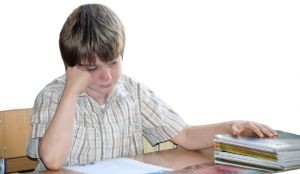 Consider a child who has difficulty holding her posture while seated at her desk, or a child who has difficulty copying from the board. A child may avoid swinging or avoid spinning type movements. Maybe a child has difficulty coordinating both sides of his body together to skip or do jumping jacks… All of these could indicate a poorly integrated proprioceptive or vestibular system.
Consider a child who has difficulty holding her posture while seated at her desk, or a child who has difficulty copying from the board. A child may avoid swinging or avoid spinning type movements. Maybe a child has difficulty coordinating both sides of his body together to skip or do jumping jacks… All of these could indicate a poorly integrated proprioceptive or vestibular system.
Proprioception helps us to know where our body and muscles are in space. The vestibular system helps us coordinate our eye movements with our head movements. These systems together help us develop and maintain normal muscle tone, which allows us to keep our heads up without slouching in the classroom, for example. The proprioceptive and vestibular systems also help us with our balance as well as our coordination.
Some simple things you can do to help the vestibular system develop and function normally include: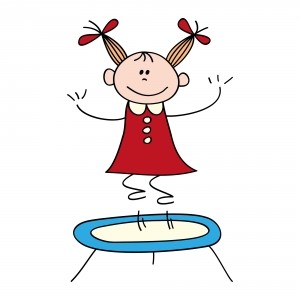
- Lots of movement—(swinging and going down slides)
- Encourage active movement propelled by the child (ie: don’t spin your child excessively).
- Jump on a trampoline
- Rhythmic rocking- (rock in a rocking chair)
- Somersaults or rolling
- Play on your tummy—builds strength throughout the body
- Balancing while seated or bouncing on a therapy ball.
- Emphasize doing two-sided (bilateral) activities that use both sides of the body, such as Jump rope, cartwheels, and skipping
- Going up and down stairs
- Riding a bike
Other suggested activities to help build proprioceptive body awareness include: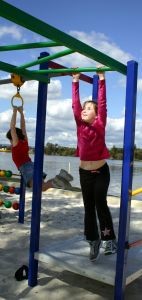
- Heavy muscle work such as pushing, pulling, or carrying weighted items
- Hanging on the monkey bars
- Pillow crashing- (jump into pile of pillows)
- Bear hugs or lightly squishing pillows on child by adding pressure (ie: make them into a taco, pizza, rolled up burrito)
- Animal walks (ie: crab, bear, snake, frog)
- Hopscotch
- Balance tasks
- Tug-o-war
- Climbing activities
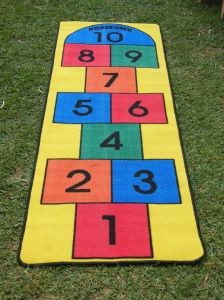 It is important to note that it is best to observe the child and encourage active movement led by the child. Some children who exhibit sensory integration problems would best be examined by an occupational therapist to help analyze the child’s behaviors in order to determine an individualized list of activities best suited for that child.
It is important to note that it is best to observe the child and encourage active movement led by the child. Some children who exhibit sensory integration problems would best be examined by an occupational therapist to help analyze the child’s behaviors in order to determine an individualized list of activities best suited for that child.
Being an observer of your kids is key. What do they like to do or what are they avoiding? Incorporating a variety of sensory rich activities is important in their development. Most importantly have FUN with your kids and let them play!
Keep an eye out for future blogs on strategies to improve motor skills, including fine motor skills to enhance performance in the classroom as well as strategies to improve coordination.
Resources
Barbara E. Hanft and Patricia A Place; “The Consulting Therapist.” 1996
Zoe Mailloux “The Vestibular System: Why Is It So Critical?” (Sensory Integration Quarterly) 1993.
www.AOTA.org
About Lisa White, OTR:
Lisa is an Occupational Therapist living and working in Denver, CO. She has over 14 years of experience as an OT. Occupational Therapy is more of a calling than a profession to her. She is passionate about helping others and hopes you find some of these tips and information helpful!
Craig Valency, MA, CSCS, president and co-founder of SPIDERfit, has been a personal trainer for the last 11 years. He is currently working at Fitness Quest 10 in San Diego, an elite personal training and athletic conditioning facility. He specializes in youth strength and conditioning programs that promote physical literacy, injury prevention and optimal performance. Along with training youths from 6 to 18 years of age for general fitness, Craig has also worked with some of the top junior tennis players in the world. He has been a physical education consultant for the Stevens Point school district in Wisconsin for the last 3 years, helping revamp the district wide programming for the K-12 PE curriculum. Craig earned his bachelor degree from UCLA, and Masters Degree in Kinesiology from San Diego State University.

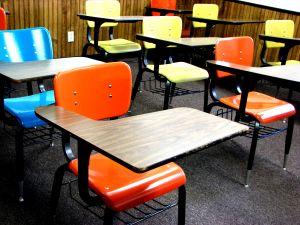



Connect with SPIDERfit!